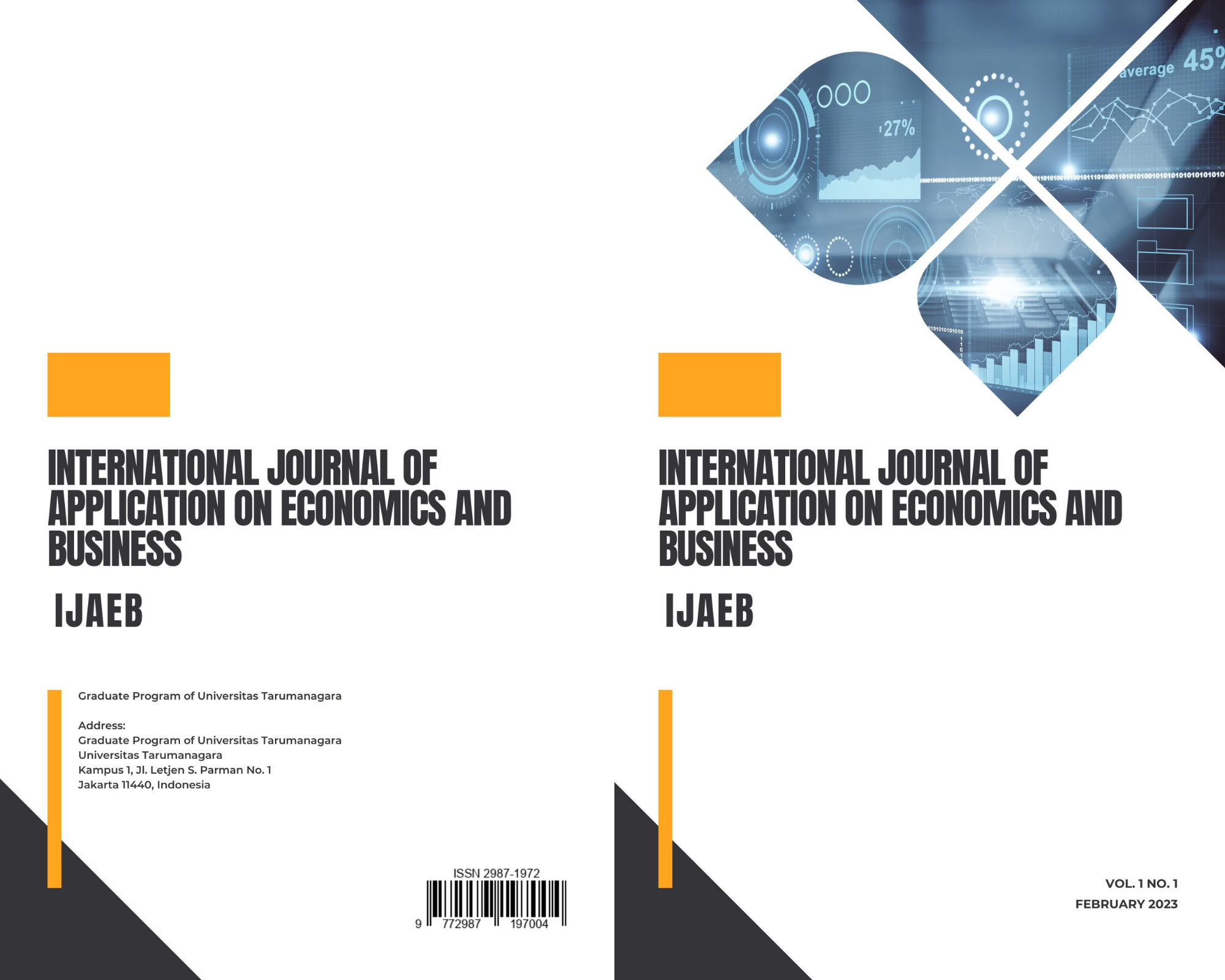Factors that Affect Continuance Usage Intention of E-Wallet Users in Jakarta
Main Article Content
Abstract
The growth of technology produces many innovative technologies that make people's lives easier. Competition between technology companies is getting fiercer, they are competing to be the number one in their industry. One of the innovative technologies is the e-wallet. The pandemic and social distancing, make contactless technology grow faster. One of the e-wallets is Sakuku by BCA. When the e-wallet industry is increasing, conversely, active Sakuku users are decreasing. This can occur due to several factors such as confirmation, perceived usefulness, perceived ease of use, and satisfaction. This study examines the effect of confirmation, perceived usefulness, perceived ease of use, and satisfaction on the continuance usage intention of Sakuku users in Jakarta. This study uses PLS-SEM as data analysis technique using data from 232 respondents who have filled out online questionnaires via google form. The results of data analysis show that perceived usefulness and satisfaction can directly affect continuance usage intention. Perceived ease of use cannot affect directly but must go through satisfaction. In addition, confirmation, perceived usefulness, and perceived ease of use can affect satisfaction.
Article Details

This work is licensed under a Creative Commons Attribution-NonCommercial-ShareAlike 4.0 International License.
This journal provides immediate open access to its content on the principle that making research freely available to the public supports a greater global exchange of knowledge.
IJAEB by Graduate Program of Universitas Tarumanagara is licensed under a Creative Commons Attribution-NonCommercial-ShareAlike 4.0 International License.. Permissions beyond the scope of this license may be available at https://journal.untar.ac.id/index.php/ijaeb
References
Kompasiana, “Pengaruh Besar Pandemi Meningkatkan Penggunaan Teknologi,” 2021. https://www.kompasiana.com/deabella4835/60f269901525101320228923/pengaruh-besar-pandemi-meningkatkan-penggunaan-teknologi (accessed Jan. 16, 2022).
HootSuite, “DIGITAL 2020 INDONESIA,” 2020. Accessed: Jan. 16, 2022. [Online]. Available: https://datareportal.com/reports/digital-2020-indonesia
merchantsavvy.co.uk, “Amazing Stats Demonstrating the Unstoppable Rise of Mobile Payments Globally,” 2022. Accessed: Jan. 16, 2022. [Online]. Available: https://www.merchantsavvy. co.uk/mobile-payment-stats-trends/
iprice.co.id, “E-Wallet Lokal Masih Mendominasi Q2 2019-2020.” https://iprice.co.id/trend/ insights/top-e-wallet-di-indonesia-2020/# (accessed Jan. 16, 2022).
A. Bhattacherjee, “Understanding Information Systems Continuance: An Expectation-Confirmation Model Author(s): Anol Bhattacherjee Source,” MIS Quarterly, vol. 25, no. 3, pp. 351–370, 2001.
C. Liao, P. Palvia, and J. L. Chen, “Information technology adoption behavior life cycle: Toward a Technology Continuance Theory (TCT),” International Journal of Information Management, vol. 29, no. 4, pp. 309–320, 2009, doi: 10.1016/j.ijinfomgt.2009.03.004.
R. L. Ollver, “A Cognitive Model of the Antecedents and Consequences of Satisfaction Decisions,” Journal of Marketing Research, vol. XVII, pp. 460–469, 1980.
F. D. Davis, “Perceived usefulness, perceived ease of use, and user acceptance of information technology,” MIS Quarterly: Management Information Systems, vol. 13, no. 3, pp. 319–339, 1989, doi: 10.2307/249008.
A. Khayer and Y. Bao, “The continuance usage intention of Alipay: Integrating context-awareness and technology continuance theory (TCT),” Bottom Line, vol. 32, no. 3, pp. 211–229, Sep. 2019, doi: 10.1108/BL-07-2019-0097.
M. Humbani and M. Wiese, “An integrated framework for the adoption and continuance intention to use mobile payment apps,” International Journal of Bank Marketing, vol. 37, no. 2, pp. 646–664, Mar. 2019, doi: 10.1108/IJBM-03-2018-0072.
B. Foroughi, M. Iranmanesh, and S. S. Hyun, “Understanding the determinants of mobile banking continuance usage intention,” Journal of Enterprise Information Management, vol. 32, no. 6, pp. 1015–1033, Oct. 2019, doi: 10.1108/JEIM-10-2018-0237.
A. M. Rawashdeh, M. B. Elayan, W. Alhyasat, and M. D. Shamout, “Electronic Human Resources Management Perceived Usefulness, Perceived Ease of Use and Continuance Usage Intention: the Mediating Role of User Satisfaction in Jordanian Hotels Sector,” International Journal for Quality Research, vol. 15, no. 2, pp. 679–696, 2021, doi: 10.24874/IJQR15.02-20.
N. J. Slack and G. Singh, “The effect of service quality on customer satisfaction and loyalty and the mediating role of customer satisfaction: Supermarkets in Fiji,” TQM Journal, vol. 32, no. 3, pp. 543–558, May 2020, doi: 10.1108/TQM-07-2019-0187.
S.-C. Chen, “Industrial Management & Data Systems,” International Journal of Innovative Computing, Information and Control, vol. 10, no. 5, pp. 490–507, 2012.
M. Limayem, S. G. Hirt, and C. M. K. Cheung, “How Habit Limits the Predictive Power of Intention: The Case of Information Systems,” Source: MIS Quarterly, vol. 31, no. 4, pp. 705–737, 2007, [Online]. Available: http://www.jstor.orgStableURL:http://www.jstor.org/stable/ 25148817
A. Li, X. Yang, and F. Guo, “Exploring mobile terminal continuance usage from customer value perspective,” Information (Switzerland), vol. 10, no. 2, 2019, doi: 10.3390/info10020070.
P. Ifinedo, “Roles of perceived fit and perceived individual learning support in students’ weblogs continuance usage intention,” International Journal of Educational Technology in Higher Education, vol. 15, no. 1, Dec. 2018, doi: 10.1186/s41239-018-0092-3.
B. Nascimento, T. Oliveira, and C. Tam, “Wearable technology: What explains continuance intention in smartwatches?” Journal of Retailing and Consumer Services, vol. 43, pp. 157–169, Jul. 2018, doi: 10.1016/j.jretconser.2018.03.017.
C. H. Huang, “Exploring the continuous usage intention of online learning platforms from the perspective of social capital,” Information (Switzerland), vol. 12, no. 4, Apr. 2021, doi: 10.3390/info12040141.
D. Shang and W. Wu, “Understanding mobile shopping consumers’ continuance intention,” Industrial Management and Data Systems, vol. 117, no. 1, pp. 213–227, 2017, doi: 10.1108/IMDS-02-2016-0052.
H. Didyasarin, R. Vongurai, and S. Inthawadee, “THE FACTORS IMPACT ATTITUDE TOWARD USING AND CUSTOMER SATISFACTION WITH ELDERLY HEALTH CARE MOBILE APPLICATION SERVICES: A CASE STUDY OF PEOPLE IN BANGKOK METROPOLITAN, THAILAND,” AU-GSB e-Journal, vol. 10, no. 1, pp. 167–176, 2017.
C. G. Wu and P. Y. Wu, “Investigating user continuance intention toward library self-service technology: The case of self-issue and return systems in the public context,” Library Hi Tech, vol. 37, no. 3, pp. 401–417, Sep. 2019, doi: 10.1108/LHT-02-2018-0025.
Joseph F. Hair, G. Tomas M. Hult, Christian M. Ringle, and Marko Sarstedt, A Primer on Partial Least Squares Structural Equation Modeling (PLS-SEM) by Josephb F. Hair, G. Tomas M. Hult, Christian M. Ringle, Marko Sarstedt (z-lib.org) (1). 2014.



